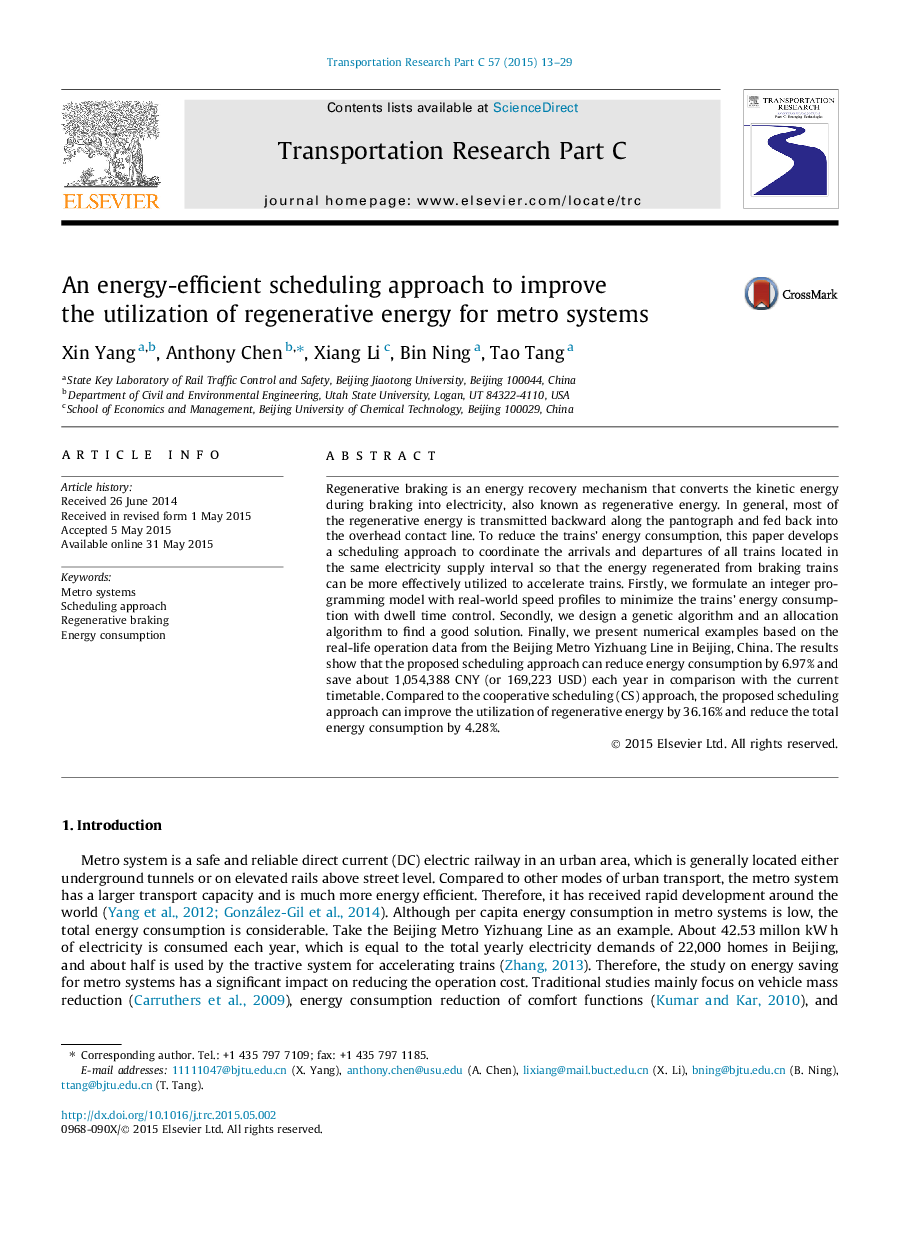| کد مقاله | کد نشریه | سال انتشار | مقاله انگلیسی | نسخه تمام متن |
|---|---|---|---|---|
| 526369 | 869101 | 2015 | 17 صفحه PDF | دانلود رایگان |
• Develop an energy-efficient scheduling approach that makes use of regenerative energy.
• Coordinate arrivals and departures of all trains located in the same electricity supply interval.
• Keep the cycle time and number of trains unchanged in optimizing the timetable.
• Design an allocation algorithm combined with genetic algorithm to find a good solution.
• Conduct numerical examples based on real data from the Beijing Metro Yizhuang Line in China.
Regenerative braking is an energy recovery mechanism that converts the kinetic energy during braking into electricity, also known as regenerative energy. In general, most of the regenerative energy is transmitted backward along the pantograph and fed back into the overhead contact line. To reduce the trains’ energy consumption, this paper develops a scheduling approach to coordinate the arrivals and departures of all trains located in the same electricity supply interval so that the energy regenerated from braking trains can be more effectively utilized to accelerate trains. Firstly, we formulate an integer programming model with real-world speed profiles to minimize the trains’ energy consumption with dwell time control. Secondly, we design a genetic algorithm and an allocation algorithm to find a good solution. Finally, we present numerical examples based on the real-life operation data from the Beijing Metro Yizhuang Line in Beijing, China. The results show that the proposed scheduling approach can reduce energy consumption by 6.97% and save about 1,054,388 CNY (or 169,223 USD) each year in comparison with the current timetable. Compared to the cooperative scheduling (CS) approach, the proposed scheduling approach can improve the utilization of regenerative energy by 36.16% and reduce the total energy consumption by 4.28%.
Journal: Transportation Research Part C: Emerging Technologies - Volume 57, August 2015, Pages 13–29
